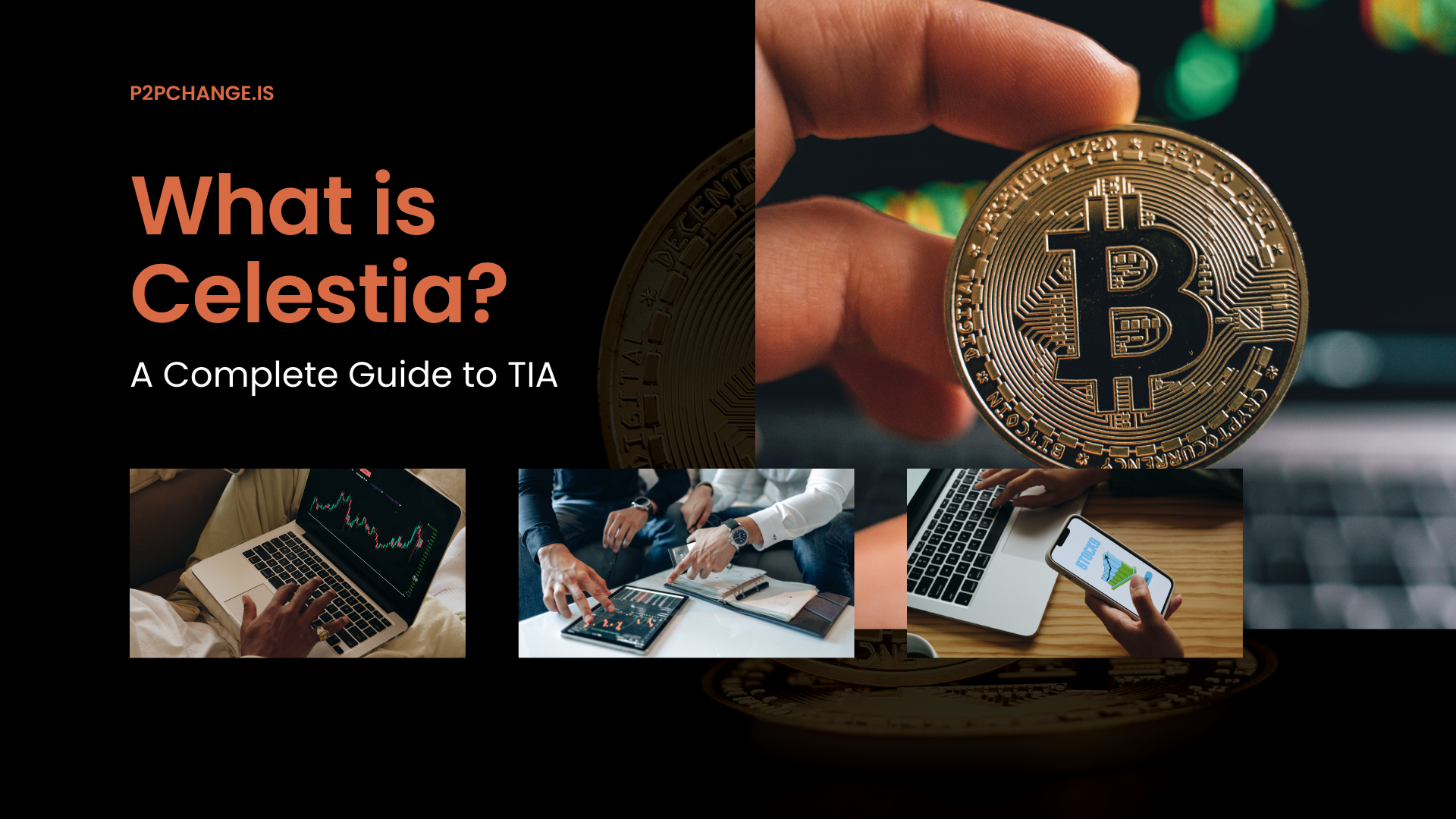
Celestia is a blockchain that focuses on one job: making sure app data is published and available for anyone to verify. It doesn’t run your smart contracts. Instead, other chains and rollups handle execution, while Celestia acts like a shared bulletin board where they post their data cheaply and securely.
Think of it like this:
- Other chains do the computing (smart contracts).
- Celestia orders the data and proves the data is really there.
- Users and light clients can check this without downloading everything.
Quick facts
- Type: Proof-of-stake blockchain (built with Cosmos SDK / CometBFT)
- Launched: October 31, 2023
- Special sauce: Data Availability Sampling (DAS), Namespaced Merkle Trees (NMTs)
- Bridge to Ethereum (for proofs): Blobstream
- Token (TIA): Used for staking, governance, and paying to publish data (“blobspace”)
Why Celestia exists
Traditional “monolithic” blockchains try to do everything on one chain: agree on blocks, run smart contracts, and store all the data. That gets expensive and hard to scale.
Celestia takes a modular approach:
- Put execution (smart contracts, app logic) on rollups or app-chains.
- Use Celestia only for ordering data and guaranteeing it’s available to everyone.
Result: more chains can run in parallel, and each can post data to one shared place.
How Celestia works
1) Data Availability Sampling (DAS)
Instead of downloading full blocks, light nodes randomly sample small pieces of each block. If enough random pieces are available, they can be confident the whole block is available. That keeps verification fast and cheap, even on modest devices.
2) Namespaced Merkle Trees (NMTs)
Each app or rollup gets its own namespace inside a block. With NMTs, you can efficiently prove that all data for your app is included—without touching everyone else’s data. That saves bandwidth and speeds things up.
3) Proof-of-Stake with Cosmos tooling
Celestia uses a standard PoS model: validators stake TIA and produce blocks; delegators stake to validators and share rewards. Upgrades and parameters are decided through on-chain governance.
Blobstream: how Ethereum can trust Celestia’s data
Many rollups settle on Ethereum. To help them prove on Ethereum that their data was posted to Celestia, there’s Blobstream. It relays Celestia’s data commitments to Ethereum smart contracts. So a rollup can:
- Publish its transaction data on Celestia (cheaper DA).
- Use Blobstream to show Ethereum that the data really exists on Celestia.
- Keep strong withdrawal and safety guarantees on Ethereum while saving on data costs.
Blobstream doesn’t move tokens; it moves proofs about data.
What the TIA token does
- Secures the network: Stake TIA (as a validator or delegator) to help run Celestia and earn rewards.
- Governance: Vote on protocol changes and community spending.
- Pays for data: Rollups/app-chains pay fees in TIA to publish their data (“blobspace”). This aligns demand for bandwidth with validator incentives.
Where Celestia fits in a modular stack
- Execution layer (rollups/app-chains): Runs smart contracts and app logic.
- Celestia (DA layer): Stores and orders the data so everyone can verify it’s there.
- Settlement layer (often Ethereum): Enforces final rules, withdrawals, and disputes.
This separation lets devs mix and match: keep Ethereum for settlement, use Celestia for cheaper data posting, and pick whatever execution environment you want.
Benefits and trade-offs
Benefits
- Cheaper verification: Light clients can check data availability with DAS—no full blocks needed.
- More throughput: Many chains can post to one DA layer at once.
- Lower DA costs for rollups: Byte-based pricing on Celestia can reduce fees vs. posting all data directly to Ethereum.
- Open to many projects: It’s a public DA layer, not a closed committee.
Trade-offs
- Operational complexity: Apps must wire together execution + DA + settlement layers correctly.
- Bridging assumptions: Blobstream needs to reliably mirror Celestia’s data commitments on Ethereum; monitoring and best practices still matter.
- Ecosystem maturity: Tools and standards for modular builds are still evolving.
Quick FAQ
Is Celestia a smart-contract chain?
Not really. Celestia focuses on data availability. Most smart-contract execution happens on rollups/app-chains that use Celestia for data.
How do Ethereum rollups use Celestia?
They post data on Celestia and use Blobstream to prove on Ethereum that the data is there.
What is TIA used for?
Staking (security), governance (voting), and paying for data publication (blobspace).
When did Celestia go live?
October 31, 2023.
How Celestia compares
- Versus monolithic L1s: Celestia doesn’t run your contracts; it just ensures data is available. That keeps verification light and scalable.
- Versus DA committees (DACs): Celestia is a public DA layer with light-client checks, not a closed group of signers.
- Versus posting data to Ethereum only: Celestia can make data cheaper and more scalable; Blobstream lets Ethereum still verify that data exists.
Getting started (simple path)
- Learn the basics: Read Celestia’s docs on DAS and NMTs.
- Explore Blobstream: See how to prove Celestia data to Ethereum.
- Try staking TIA: Delegate to a validator and learn governance.
- If you’re a builder: Prototype a rollup or app-chain that posts data to Celestia.
Conclusion
If blockchains are Lego bricks, Celestia is the shared data brick. Your app or rollup runs elsewhere, but posts its data on Celestia so anyone can verify it easily and cheaply.